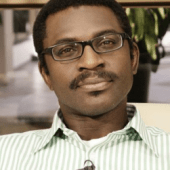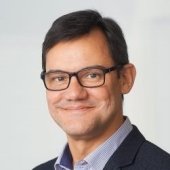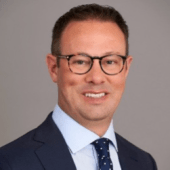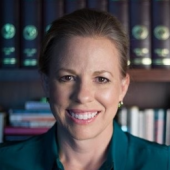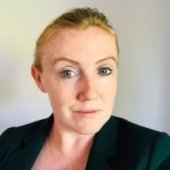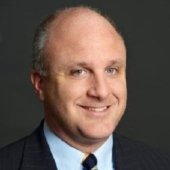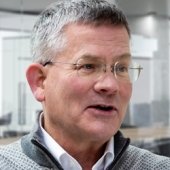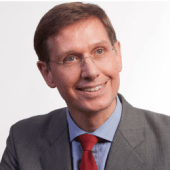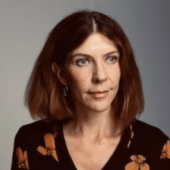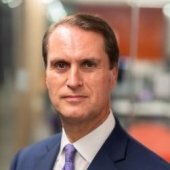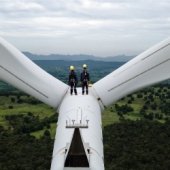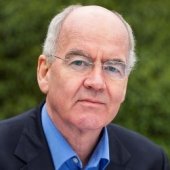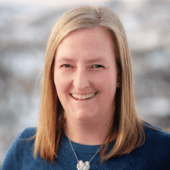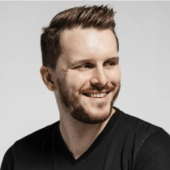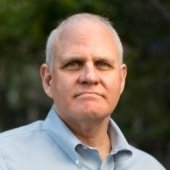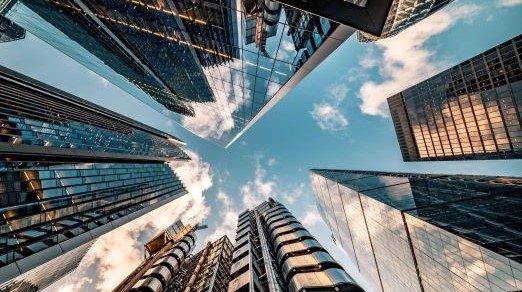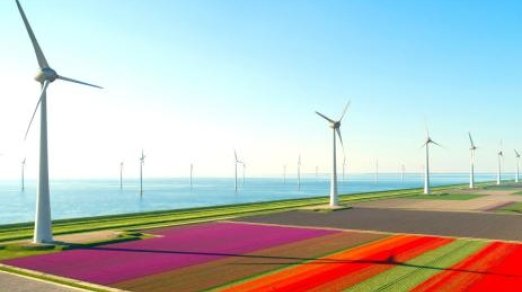Sustainability chief of Drax Group, UK: 'We'll be first carbon-negative power station by 2030'
IN BRIEF
- 13:25 - The war in Ukraine has made everybody a lot more sensitive to energy security. Should we, as an economy, rely on the raw material or the energy from another continent, another part of the world or should we make our own power within our own borders?
- 16:25 - Not only do we have to produce business models and supply chains that reduce and eliminate carbon emissions, we also need business models and supply chains that know their impact on nature, can ensure they don’t do any harm to nature, but more importantly and new to this debate, can use their business models to enhance and improve nature.
- 23:37 - If your business stopped existing tomorrow, overnight, would the planet be better off or would it be worse off?
Alan Knight, Group Director of Sustainability at the Drax Group, a UK-based renewable energy company engaged in power generation, the production of sustainable biomass and the sale of renewable electricity to businesses, joins the VISION by Protiviti podcast. Under Alan’s leadership, Drax is committed to enabling a zero-carbon, lower cost energy future through engineering, technology and innovation, and has set an ambitious goal to be the world’s first carbon negative power station by 2030. His call to action for boards and business leaders? Ask yourself the hard questions… including, would the planet be better or worse off without your company, your product or your service?
Sustainability chief of Drax Group, UK: 'We'll be first carbon-negative power station by 2030' - Podcast transcript
Joe Kornik: Welcome to the VISION by Protiviti podcast. I’m Joe Kornik, Editor-in-Chief of VISION by Protiviti, our global content resource looking into the future to examine the big themes that will impact the C-suite and executive boardrooms worldwide. Today we’re exploring the future of ESG and its strategic implications for people, process, and the planet. I’m happy to be joined by Alan Knight, Group Director of Sustainability at the Drax Group, a UK-based renewable energy company engaged in power generation, the production of sustainable biomass, and the sale of renewable electricity to businesses. Alan has 30 years experience working with global companies and governments on sustainability and joined Drax about 18 months ago. Drax is committed to enabling a zero-carbon, lower cost energy future through engineering, technology, and innovation and has set a very ambitious goal to be the world’s first carbon-negative power station. Alan, thank you so much for joining me today.
Alan Knight: Thank you. It’s good to be here.
Joe Kornik: So Alan, I talked a bit about the Drax Group in my intro. Why don’t you talk a little bit more about the Drax Group and your role there as Group Director of Sustainability?
Alan Knight: Sure. So Drax, 10 years ago, was a power station in the UK. A very important power station making about 10% or 11% of all the UK’s electricity, but it was being fired by coal. It was located where it was because the coal fields were very close to the power station, but of course with climate change and the pressures on companies to change their carbon footprint, Drax made the decision that, rather than just close down, that it would reconvert its whole power station to use biomass. That project is now completed and it’s now going on the next stage of the journey, which is to combine the biomass generation facility with carbon capture and storage, which—and we can explain this in a bit more detail—will make it one of the world’s first negative-carbon power stations because the biomass is from a forest, so that’s carbon—and inverted carbon’s neutral. We have to be careful of the language we use, but for the sake of this, it’s a fuel which carbon’s being drawn out the sky to grow the biomass which we then use. Therefore, by combining it with that, storing the CO2 underground, it becomes a negative power station. So that’s the core of Drax but Drax also owns other generation facilities in the UK, hydro in particular, and more importantly for us is because we suddenly needed wood pellets, we now have wood pellet making facilities in British Columbia and other parts of Canada and the United States. So we are one of the world’s largest users of pellets. We’re one of the largest makers of pellets. We will be the world’s first negative power station. We’ve got ambitions to build similar projects around the world and we will be one of the biggest retailers of carbon-negative emissions. So from a small power station burning coal, we’re really going places with new technology and new ambitions.
Joe Kornik: Great. As the as the group director of sustainability, I would imagine you’re sort of leading that charge and you mentioned some of those really ambitious goals that Drax has on the table including, as you mentioned, the world’s first carbon-negative power station. It is currently the largest producer of biomass for energy. So if you could, talk to me a little bit about those specific goals and sort of how you achieve them and what will be required to get there to meet those goals?
Alan Knight: So our single most important goal is to be the world’s first negative-power station, so that means building and testing new technology to do that, to capture the carbon and then take it underground, so that’s the first challenge. What we’ve recognized for that to work—of course we’ve got to have biomass and that biomass has to come from well managed forests. It has to meet very strict sustainability criteria. There’s a lot of concerns from environmentalists that an increase in biomass could lead to the loss of forests. We have NGOs saying, “Drax burns forests,” where the opposite is completely true. We use sawdust from saw mills and we use parts the timber industry cannot use, so our sourcing principle is simply we buy it from forest harvested for timber and we use the bits of the forest and the sawdust which the timber sector cannot use. So it’s a byproduct. But of course making sure that happens all the time, making sure there’s enough biomass for us is a challenge. So one of my roles is to oversee that process and to make sure we have very clear criteria and standards to ensure that we do only use the right biomass and that those processes—the processes internally work to make sure we then use that biomass, so that’s another massive challenge.
Another challenge for us will be how do you commercialize negative emissions? Because we know there’s a growing interest as companies think about their net zero ambitions. To be net zero they’re going to want to buy offsets and our business model provides those offsets cause we’re burying more carbon than we produce, so we’re going to sell that to allow other companies to achieve net zero. Great, great opportunity but what are the rules? If you’re a company, what would you need from us to trust us, if you give us money for a bit of paper which says, “This amount of tons have been buried underground and you now own them,” you can imagine the governance and the rules behind that. Because not many people have done this yet, creating that rule book and creating confidence in what we’re doing is another challenge. And then also because we have a value chain like all companies, we still emit carbon. Our biomass goes on ships and they’re shipped to the UK cause they’re coming from America. We ship them to the UK. So there’s still carbon emissions in our system and what we’ve recognized is we’ve got to eliminate those carbon emissions or get them as close to zero as part of this credible offer. So we, like any other company, still got work to do to squeeze out the non-coal carbon emissions from our business.
Joe Kornik: Very interesting and I know that those are pretty ambitious goals but we spent some time looking around the Drax website and some of your other initiatives, and I know there are a lot of other sustainability goals that Drax has for the future. As the Group Director of Sustainability, I’m sure a lot of that falls under your purview. So why don’t you talk to me a little bit about some of the other sustainability goals that you’re focused on right now and for the future?
Alan Knight: Yes. So what I described previously was almost the challenges of our fundamental business model as a carbon-negative company. So how have we extended that to the wider spectrum of sustainability issues? What we’ve said is, our business model, be it the pellet plants in America, the generator facilities in the UK, and whatever we do in the future, not only have to deliver economic returns, they also have to deliver people-positive outcomes, climate-positive outcomes, and nature-positive outcomes i.e. we’re creating a business model which provides value on the environmental and social agenda as well as a pure economic agenda. The challenge for that is, how do we prove that? What do we actually have to do and how do we prove it? What are the metrics? What are the verification? But what we’re doing, which I think is really exciting, is we’re creating a business model whereby the economic returns are coupled with returns for society and nature. Historically, people have talked about the tradeoff between growing your profits and environmental impact. What we’re saying is we are determined to create a business model that as our economic performance grows, so does our positive contribution to people, nature, and climate go. So you have a business model coupled with sustainability.
Joe Kornik: Sure. You mentioned carbon negativity a lot there. That’s an area that I think is a real interest to our listeners. Is there more to say on carbon negativity? Is that where most companies will be striving? We’ve heard so much about carbon neutral or net zero but carbon negativity, at least from where I sit, is a bit of a new concept. Can you talk a little bit more about that and its role in the future?
Alan Knight: Carbon negativity is a new concept, but it actually doesn’t start with the business agenda, it starts with a global agenda/the IPCC agenda, which is to say if we are to achieve 1.5° by 2050, the portfolio of mitigation activities you’ve got—decoupling our economy from fossil fuels, protecting forests, and everything—probably won’t be enough and we’ve actually got to find a way of taking CO2 which is already in the sky out of the sky and burying it underground or doing something with it. The numbers vary depending on the different scenarios, but it’s absolutely clear on all the scenarios, from the best to the worst, that millions of tons of CO2 need to be physically removed from the sky as part of the global ambition to reach 1.5° by 2050. So that then begs the question, “How do you do that? Do we just rely on tree planting?” Which will make a huge contribution. What about technical fixes? There’s this thing called direct air capture or DACs where people are inventing machines and new air conditioning units. Just turn them on and they take CO2 out of the sky, they liquefy it, and you bury it. It works, but there’s challenges with the price cause that’s an expensive machine. What we’re doing is we’re using a natural raw material which is waste products from the timber industry or forestry residues. We’re turning that into electricity which of course is zero carbon electricity which the world needs and it’s decoupling our energy system from energy, and then we capture the CO2 from the combustion or the biomass and we’re putting that underground. So we are providing electricity, we’re supporting forestry, but we’re also creating a product called negative carbon emissions.
So where do most other corporates come in this? Most other corporates are having to set themselves science-based targets, reducing their carbon emissions by a huge amount, but the overall goal is that all companies in the world have to be net zero by 2050. What does net zero mean? It means you reduce as much of the carbon as you can and you buy offsets from the market. We will provide one of those offsets. So for many companies, we’re providing them with electricity. The same companies or other companies we might be presenting them negative carbon emissions so that that’s how they can achieve net zero. So your company, you’ve reduced your carbon emissions by 90%, but that last 10% is just impossible, but you still want to be net zero. That’s when you will go to the market and you’ll buy a product like ours. So that’s where we fit in. There’s another interesting dynamic. Offsets have been sold for years, but they’ve been like avoided emissions—wind turbines and all of that. What we’re doing is, this isn’t avoided emissions, this is carbon removals. So we’re going to be a carbon-negative company and help other companies achieve their net zero ambitions.
Joe Kornik: Right. So interesting and it’s so rare that I get a chance to talk to somebody who’s as deeply embedded in this as you and ask you about the future and where we’re headed and the future of renewable energy and renewable power generation and sustainable biomass. What’s the potential? You’ve touched on it a little bit there, but where do you see it? How do you see it all playing out over the next decade or even much further in the future?
Alan Knight: Well, the energy sector is sort of facing three very important challenges. The war in Ukraine has made everybody a lot more sensitive to energy security. Should we, as an economy, rely on the raw material or the energy from another continent, another part of the world or should we make our own power within our own borders? So that’s one very important debate and very topical at the moment. In the UK and I’m sure it’s true for other parts of world, just the cost of energy is becoming a major challenge, and then the third one is the decarbonization of energy. So an energy company has to work out what is the right business model to be true to those three challenges? More energy security in the countries I serve, keeping prices at a level that people can afford, and decarbonizing. So what I would argue is the business models Drax is working on addresses those three concerns.
There’s other choices as well, but we’re part of that change in the way energy is produced to be true to those three challenges, but there are other challenges as well in this world, like forestry. The world needs forests and the world needs forests not just for carbon, but also for nature, and we also want forests for timber. One of the solutions to decarbonize the build sector is to use more timber. Timber comes from forests and therefore we need to find ways to improve forestry. What we’ve learned recently is by us taking out the thinnings and finding a safe disposal route for things like sawdust and diseased trees, we’re actually helping improve the quality of forestry. For example, you would have seen on the news forest fires. They’re becoming more frequent and they’re becoming more intense. One way that scientists have recognized to reduce the intensity of forest fires is to thin them more. Take out all the undergrowth. It’s the undergrowth in the forest which causes them to explode when they’re super dry. So they’re now taking that material out, but they don’t know what to do with it and we’re saying, “We can make it into pellets.” So we have a business model which is helping create positive outcomes for forestry, positive outcomes for the energy bay in the countries we have, and we’re providing another product for all the corporates in the world to help them achieve net zero. So yeah. As I said, it’s really exciting times.
Joe Kornik: Yeah. Yeah. You talked about some of the challenges and I think you mentioned some of the opportunities, but are there other opportunities that are on the horizon that you’re excited about?
Alan Knight: I would say this concept of nature positive is becoming very exciting. A lot of the sustainability conversation—rightly so—has focused on carbon and it needs to and it must do, but I’m sure many people listening to this have heard this concept of nature positive. For me, I think this is an opportunity as well as a threat if you miss it. Not only if we’ve got to produce business models and supply chains which reduce and eliminate carbon emissions, we also now need business models and supply chains which know their impact on nature, can ensure they don’t do any harm to that nature, but more importantly and new to this debate, can use their business models to enhance and improve nature. Then that’s why I used the example of how us taking that material, the undergrowth from the forest, is helping reduce the chances of forest fire. What a fantastic win-win. We’re getting raw material we need to power the UK economy and at the same time we’re helping British Columbia and Southeast USA reduce the number of their forest fires by just taking the material which causes forest fires. That for me is an example of a nature positive outcome, so I think that’s a really exciting opportunity which is just going to grow and grow. So in the future, businesses will have to prove they don’t have an impact on the climate and prove they don’t have an impact on nature or in both cases, enhancing and restoring it.
Joe Kornik: Right. So I’m curious as to your thoughts on a call to action, if you will, for global business leaders who are clearly thinking about this day in and day out or putting their climate practice, their strategy in place, they’re talking to their sustainability officers or their heads of ESG or whatever the case might be—what should be the steps that they should be taking right now as they look to put their strategic plans forward not just for 2030, but for even a much longer horizon?
Alan Knight: I would say the first thing they need to focus on is the obvious, which is reducing their carbon footprint, but really align with the net zero goal. People are saying net zero by 2050. We’re already seeing other companies saying, “If we’re going to do it, you might as well do it by 2030. Let’s get on with it.” So that one and it’s probably the most obvious on the list, is truly embrace net zero and what does it mean for your company and don’t wait to 2050 if you think you can do it sooner. I think in the second one is do ask yourself the question, “What would it take for us to be a nature positive company? What is our relationship with nature? How direct? Obviously, is if you’re a food producer it’s clearer. If you’re mobile phone manufacturer, it’s less obvious but it’s there. All those mines making those minerals, telephone, masks, and all of that sort of stuff so not only think about, “Where do I do no harm to nature?” It’s, “Where can my business and my value chains actively restore nature to the levels we need to sustain the economy in 2050?” So I think that’s a huge challenge and the question you should ask yourself, but also I think the other question I would ask myself is, “What about my business model and what about my products? Am I still growing my business and minimizing my negative impact on the climate and my negative impact on nature or have I created a product and a business model that as I grow and succeed economically, I’m creating more impact?” Couple your business model and your products with better environmental and social outcomes. Twenty years ago it was about decoupling. “How do I minimize my damage? How do I do less harm and still grow my profits?” That’s yesterday. It’s now, “What is the complete alignment that the more products I sell, the better the climate is and better nature is and better people is?” And it’s such a fundamental question and I wonder how many boards have actually asked themselves that question. Another way of doing that as a teaser for a podcast—our first business leaders, imagine if they were hearing a podcast given by their product and the question the products were being asked is, “Where do you do harm to nature and where do you do good for nature? Where are you helping the climate and where are you making it worse? Where are you helping people and where are you making it worse? What would it take for you to only do good for people, nature, and climate?” and my challenge to business leaders is, “Do you know what that podcast would say?” If you know what it’s saying, why aren’t you doing it?
Joe Kornik: Yeah. Interesting. I think that there’s a lot of boards and business leaders who want to do the right thing and are doing the right thing, but are they doing it for the right reasons? Are there strategic business reasons in place yet to do this or is it still just a little bit of their employees are demanding it or their consumers are demanding it or they don’t want to fall behind the curve in terms of being one of those companies that doesn’t get it or isn’t with the times when it comes to sustainability? Are you seeing that? Are we getting to the point where the business case is more than just pleasing their own employees or pleasing consumers, but there’s a real strategic reason to put the full plan in place?
Alan Knight: I’m seeing it in some companies. Lots of other companies are in the place you’ve described, which is there’s so much pressure, be it investors or employees, to be seen to be addressing these issues, that they’re going through the motions and there’s nothing wrong with that if by going through the motions you start intellectually maturing and you realize there’s more to be done. All journeys start from somewhere. Now even with Drax it was a few years ago it was, “We’ve got to stop using coal.” Fast forward 10 years, they’re reinventing the whole business model and going into places they never imagined. So it doesn’t matter where you start, but the question again of business leaders is be truthful for yourself. Are you going through the motions because you’re trying to answer those surveys from investors and trying to make those back pages in your annual report look right or are you truly thinking about these issues? Yeah? Another way of asking it, going back to that idea for your product, if it talked what would you say? If your business stopped existing tomorrow/overnight, would the planet be better off or would it be worse off? For me, I’ve learned in Drax but all the other companies I’ve worked for is it starts with the honesty of the question being asked at the executive committee and board level. Are you asking yourself these big questions? I’ve teased you with some clever questions, “If your product could talk, what would it say?” Doesn't matter what the question is, but are you asking yourselves deep, deep questions or have you just got a sustainability manager who’s writing the back page for the annual report and filling in those surveys and getting a good enough grade?
Joe Kornik: Right. Right. Well, that sort of brings into our last question, Alan, and that’s asking you—we call this program VISION by Protiviti because we want to talk to smart people and ask them their opinions or thee future and where we think we’re going and the type of impact that future will have on businesses. So if I asked you to look out say to the year 2035 or as far as you’d like to look out, how optimistic are you? Where do you think we’ll be? How confident are you that we are headed in the right direction and are going to meet to meet the challenges, the really big challenges that lie ahead?
Alan Knight: I am very confident that the technology exists to do clever things, things we need to do. I’m also very confident that a lot of these changes are simple behavior changes. It’s not all clever technology, it’s just people’s attitude towards themselves, how they address their quality of life issues. All the right debates have been had. All the right technology is being developed. Short-term economics and short-term needs obviously interfere with that and disrupt that, but fundamentally, with the pressures on the planet and the growing desire for people to have a good quality of life, a modern quality of life, people’s desire to live in a natural system which works, people’s fear and frustrations with climate change now that we’re seeing it. There’s a lot of moving parts there which will make, say by 2050, a truly sustainable outcome for everybody very possible and I believe we will achieve it, but it’s going to be a bumpy road on the way but fundamentally, we can do it, we should be able to do it, and let’s hope that we do do it.
Joe Kornik: Well, thank you for the time. I appreciate the insights and the fascinating conversation, so thanks for joining me today, Alan.<>Alan Knight: Brilliant. Thank you.
Joe Kornik: Thank you for listening to the VISION by Protiviti podcast. Please rate and subscribe wherever you listen to podcasts and be sure to visit our website at vision.protiviti.com for all the latest insights including podcasts, videos, and articles about the future of ESG and sustainable business. For Alan Knight, I’m Joe Kornik and we’ll see you next time. Thanks for listening.
Alan Knight has over 30 years’ experience of working with global companies and governments on sustainability. In April 2021 he joined Drax as the Group Director of Sustainability. Drax is the largest producer of biomass for energy, and the company's ambition is to be the world’s first carbon-negative power station. Prior to joining Drax, Knight worked in the steel and mining sector for seven years as the Global Head of Sustainable Development for ArcelorMittal. He was Co-chairman of Responsible Steel and served on the steering board of the Initiative for Responsible Mining.


